Bichapoo Puppies: Bichapoos Dog Breed
The Bichapoo is a charming hybrid, a mix of Bichon Frise and either a Toy or Miniature Poodle, known for its compact size and sharp mind. Ideal for people with allergies, this breed is cherished for its hypoallergenic coat that minimizes shedding. With a weight range of 6 to 12 pounds and a hopeful lifespan of 12 to 15 years, they fit nicely into various home environments, be it a cozy apartment or a spacious house with a backyard.
These dogs are friendly and quick to learn new tricks, making them an excellent match for those new to dog ownership. Bichapoos get along well with kids and other pets, adding joy to any family. Regular grooming is critical to keep their coat in top condition. A carefully chosen diet is vital for their health and energy.
Key Takeaways
- Bichapoos are allergy-friendly, perfect for sensitive owners.
- Compact and intelligent, they adapt well to various living spaces.
- Easy-going and sociable, ideal for first-time dog parents.
Bichapoos offer a low-shedding coat for allergy sufferers. They thrive in both apartments and homes with yards. These dogs bond with children and pets, bringing happiness to families. Maintain their coat with regular grooming and sustain their vitality with a nutritious diet.
Quick Facts
The Bichapoo is a charming mix of a Bichon Frise and a Poodle, either Toy or Miniature in size. These dogs are on the smaller side, usually weighing about 10 to 15 pounds and standing anywhere from 9 to 15 inches tall. They have a good lifespan, often living between 12 to 15 years.
Bichapoos are known for their sharp minds and willingness to learn, making them a joy to train. They adjust well to different living situations, whether a cozy apartment or a spacious home, and they get along with other pets and fit in well with families with older kids.
Training these dogs properly from a young age is essential to prevent unwanted habits like excessive barking or small dog syndrome. Bichapoos have coats that need regular grooming to stay healthy and look their best. Thankfully, they tend to be low-shedders, which is convenient for people who prefer a cleaner home environment.
Bichapoo Pictures
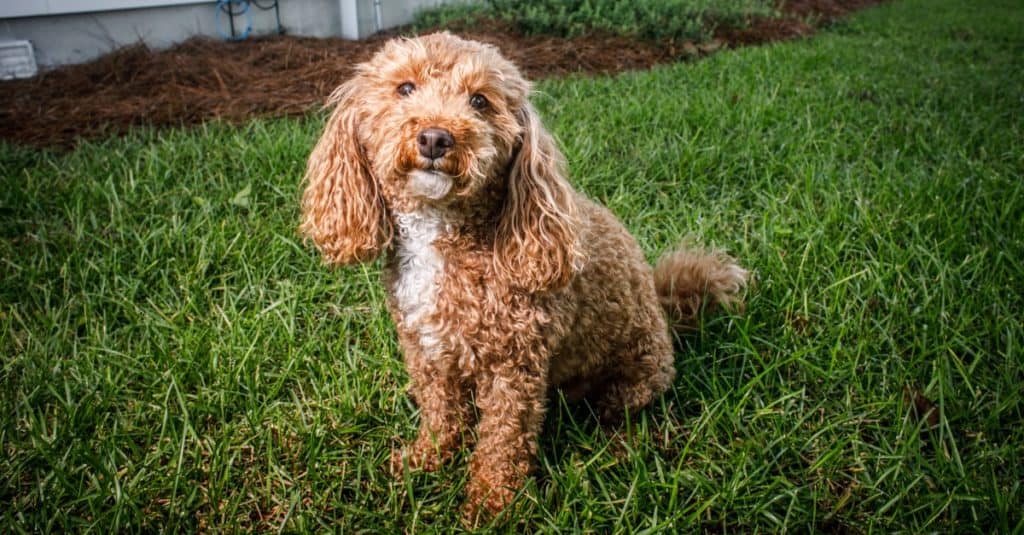
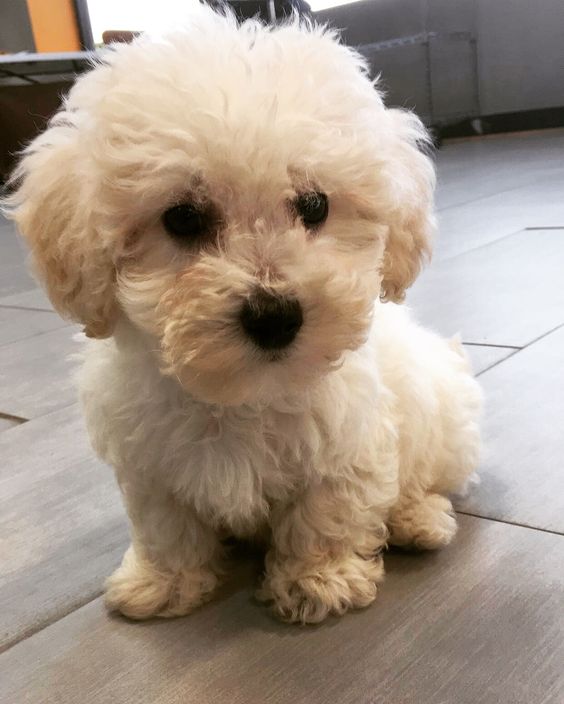
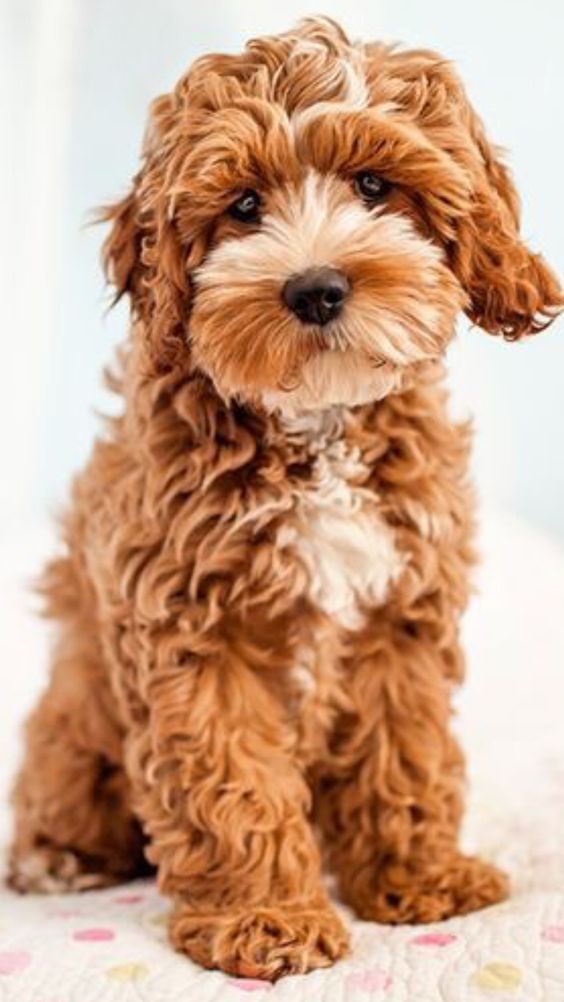
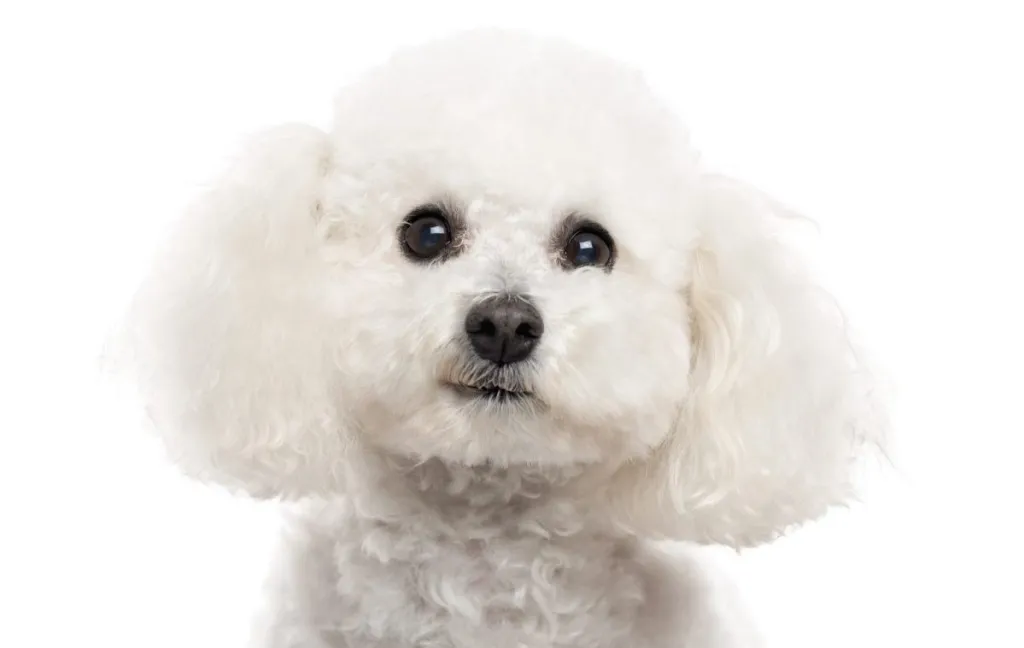
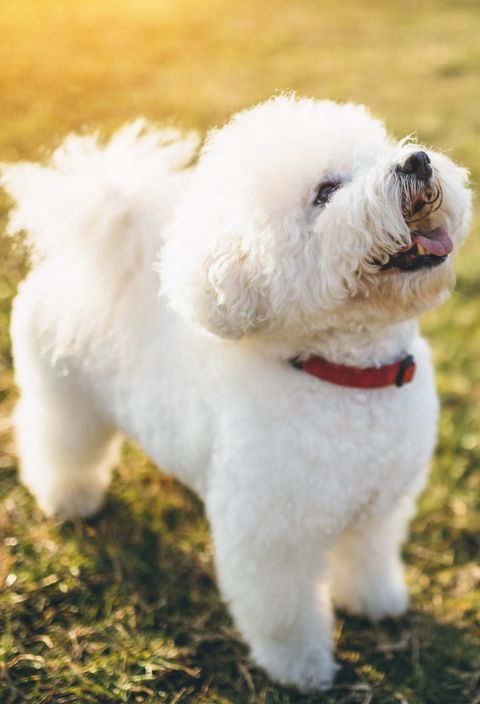
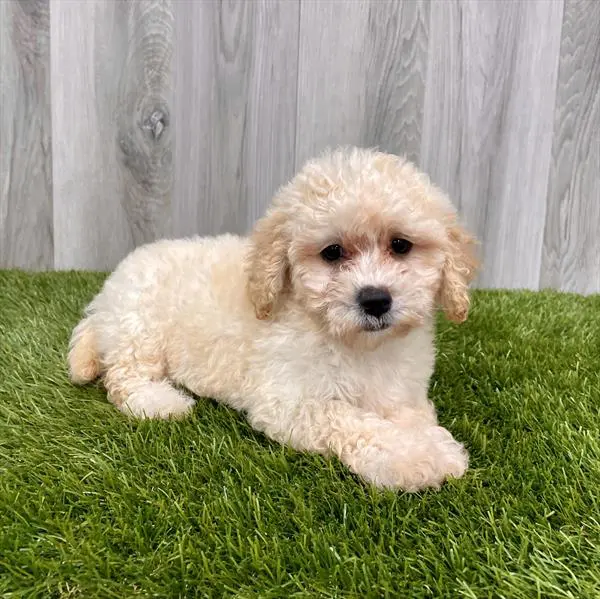
Overview
The Bichapoo, a mixed breed dog from a Poodle and Bichon Frise pairing, brings together a thoughtful, loving nature that can fit into various home environments. Known as Bichpoo as well, this dog combines the preferred qualities of its parents, resulting in an easy-to-train, friendly pet. Bichapoos are known for their happy, devoted nature, creating a deep connection with their families. They get along with other animals and people, making them great for various living situations.
An adult Bichapoo weighs 10-15 pounds and is 9-15 inches tall. They have a life expectancy of 12-15 years. Regular exercise, grooming, and dental care are needed to keep them healthy, along with steady training.
Key Traits
The Bichapoo breed stands out for its hypoallergenic coat, making it an excellent choice for people with allergies. This mixed breed dog, a blend of Bichon Frise and Poodle, sheds very little. They’re known for their approachable personalities and quick learners, so they make such good pets for various households.
Bichapoos inherit their cleverness from their parent breeds, and this smartness makes them responsive to training. It’s essential to start training and socializing them early to curb their tendency to bark too much and prevent minor dog attitude issues. These dogs can adapt to different living situations, thrive in apartments and homes, and are ideal for families with older kids.
| Trait | Description | Benefit for Owners |
|---|---|---|
| Coat | Hypoallergenic, low-shedding | Suitable for allergies |
| Temperament | Approachable, clever, loving | Wonderful family companion |
| Trainability | Quick to learn, positive feedback works well | Straightforward to train |
Breed Origins
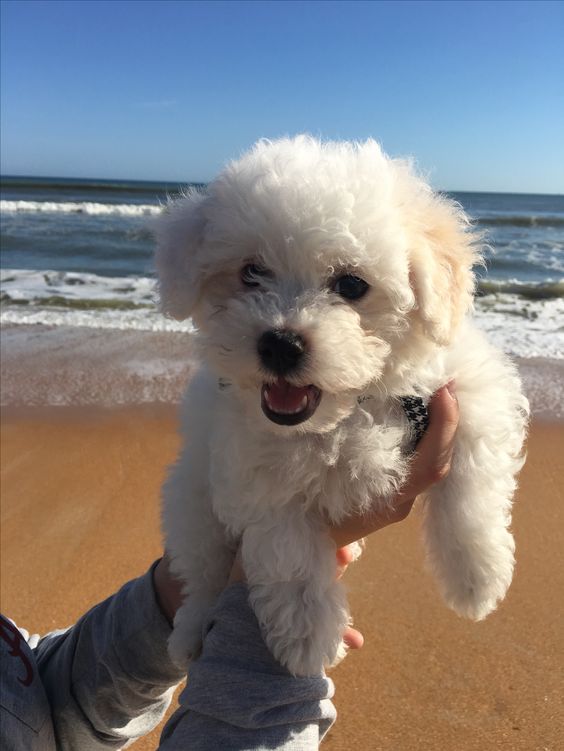
The Bichapoo is a mix between a Bichon Frise and a Poodle, two breeds known for their friendly nature and sharp minds. The goal behind this crossbreed is to create a dog that embodies the best qualities of both its parents. To understand the Bichapoo, looking at the genetic heritage passed down from the Bichon Frise and Poodle and the historical journey of both breeds is essential.
Ancestral Genetic Mix: Exploring the genetic contributions from the Bichon Frise and Poodle to the Bichapoo.
Historical Development: Looking into the origin and spread of the Bichapoo’s parent breeds worldwide.
Characteristic Traits Evolution: Analyzing how selective breeding has refined certain traits in the Bichapoo.
Breed Standardization: Discuss the efforts to achieve a recognized set of characteristics for the Bichapoo breed.
Popularity and Purpose: Examining what has made the Bichapoo a favored choice for many and the roles they fulfill in their human companions’ lives.
In this examination, we track the genetic lineage of the Bichapoo, considering the traits inherited from its ancestors. We also believe in the history of the Bichon Frise and Poodle breeds, including their spread across different regions. The selection and refinement of traits in the Bichapoo through careful breeding are also discussed. Moreover, the journey toward establishing a consistent breed identity for the Bichapoo is reviewed. Lastly, we examine why the Bichapoo has become popular and the various roles these dogs play in their owners’ lives.
Ancestral Genetic Mix
Researching the heritage of Bichapoos reveals that they are a unique blend of the Bichon Frise and the Poodle, two breeds with a storied past in Europe. Bichapoos are intentionally bred to showcase the best qualities of both—the Bichon Frise’s friendly demeanor and the Poodle’s innovative traits and low-shedding coat.
With its roots in the Mediterranean, the Bichon Frise became favored in countries like France and Italy. On the other hand, the Poodle, initially bred for retrieving water, has historical ties to Germany, France, and Spain. This rich genetic background gives Bichapoos a distinctive combination of appearance and personality.
Adult Bichapoos generally weigh between 10 and 15 pounds and have a 12 to 15 years lifespan, reflecting their ancestors’ long-lasting nature and versatility.
Historical Development
The Bichapoo is a thoughtfully created hybrid, combining the Bichon Frise and the Miniature Poodle. This mix was intended to bring together the friendly disposition of the Bichon Frise with the intelligent mind and low-shedding coat of the Poodle.
The Bichon Frise can trace its roots to the Mediterranean and became immensely popular in European countries like Italy and France during the 1300s. On the other hand, the Poodle was known for its prowess in retrieving from water, becoming a favored breed in Germany, France, and Spain.
This crossbreed is a newer creation, responding to the preference for dogs that meet specific aesthetic and behavioral standards after the World War eras. The Bichapoo offers a blend of qualities from its ancestry, fulfilling modern desires for pet companionship.
Characteristic Traits Evolution
In creating the Bichapoo, breeders combined the Poodle’s hypoallergenic coat with the Bichon Frise’s friendly personality to meet the needs of pet owners who desire these specific features in a single dog.
The resulting breed offers a dense coat that helps to minimize allergens, making it a suitable choice for allergy sufferers. To keep its fur in good shape and avoid tangles, the Bichapoo needs regular grooming.
It has also inherited the charming and easy-going nature of the Bichon Frise, making it a loyal and enjoyable addition to any family.
The development of the Bichapoo highlights its intentional design as a pet that’s both easy to love and relatively easy to care for.
Physical Dimensions
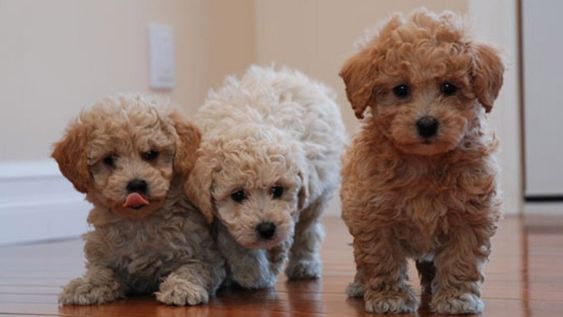
The size and shape of a Bichapoo can significantly influence its health and looks. These charming hybrids inherit a mix of features from their Bichon Frise and Poodle parents, which also dictate how much grooming they’ll need. If you’re considering getting a Bichapoo, knowing their typical size, growth patterns, and how much exercise they need to stay happy and healthy is helpful.
Bichapoos are generally lightweight, tipping the scales at around 10 to 15 pounds. They stand 9 to 15 inches tall at the shoulder, making them comfortable for most homes. Their coats can be anything from curly to straight, and are known for being low-shedding, which is a relief for those who want to minimize pet hair in the house. You can find them in several colors, including white, black, brown, and various mixed shades.
Bichapoos usually reach their full size by the time they’re 12 to 18 months old, so you’ll have a good idea early on how big they’ll get. Regular walks and playtime are necessary to keep them in top condition.
Average Weight, Height
Bichapoos typically weigh between 10 to 15 pounds and have a height of 9 to 15 inches when fully grown. These sizes are standard for small to medium dog breeds, making them suitable for many homes.
A Bichapoo’s well-proportioned body helps it move with liveliness and speed, which many pet owners appreciate. Remember that there might be slight variations in size among individual Bichapoos, as their specific breed mix can influence their size.
To keep a Bichapoo healthy, it’s important to watch their diet and ensure they get enough exercise. While the sizes mentioned are typical, some dogs may fall outside these ranges, yet these measurements are a good starting point for people looking to adopt.
Coat Type, Color
Bichapoos are known for their distinctive coats in various colors, including white, apricot, brown, black, gray, and red. Their fur texture varies and can be wavy or curly, depending on whether they take after their Bichon Frise or Poodle parent.
To keep their fur healthy and prevent knots, Bichapoos need regular brushing. They have moderate to high grooming needs, and it’s recommended to have them professionally groomed every two to four months.
While white and apricot are popular colors, each shade adds to this breed’s attractive look.
Growth Rate
Bichapoo puppies, a mix of Bichon Frise and Poodle, proliferate within their initial six months. They typically reach an adult size of 9 to 15 inches tall and weigh between 10 and 15 pounds.
Observing your Bichapoo’s development through frequent weigh-ins and vet visits is crucial to ensure they meet growth milestones. A balanced diet, consistent exercise, and proper healthcare support are critical to their healthy development.
Exercise Requirements
Bichapoos are small, sturdy dogs weighing 10 and 15 pounds and about 9 to 15 inches tall. To stay healthy and avoid weight gain, a concern for many small breeds, they need daily exercise.
A simple yet effective way to meet this need is through daily walks, which help keep their heart healthy and manage their weight. These outings satisfy their curiosity and energy, ensuring they’re mentally and physically happy.
Consistent exercise is vital for Bichapoos, especially considering they can live for 12-15 years. Despite their ability to adjust, Bichapoos still require regular physical activity to prevent the health issues of inactivity.
Common Health Issues
Bichapoos, a mix between Bichon Frise and Poodles, might face hereditary health issues like hip dysplasia and disk disease inherited from their parents. Poorly formed hip joints can lead to arthritis and walking difficulties, so keeping an eye on your dog’s joint health is vital for their well-being.
Disk disease can cause a Bichapoo to have stiff back legs, weakness, or even trouble moving correctly. If your Bichapoo has difficulty eating or starts losing weight, these could be signs of the condition. Owners should avoid these problems and consult a vet early to manage them effectively.
Temperament Traits
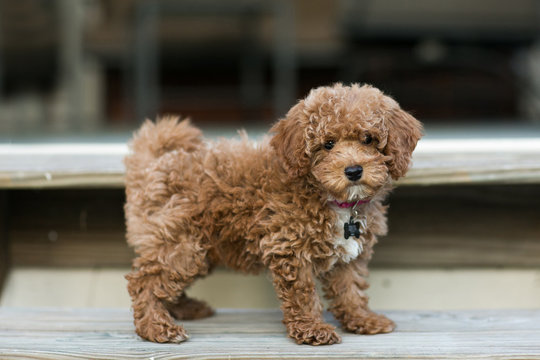
Bichapoos are known for their loyal nature and ability to fit into various situations. These dogs crave mental and physical challenges due to their intelligent and energetic character. Owners must focus on proper socialization and helping their Bichapoos get comfortable with different places and people to have happy, well-adjusted dogs.
- Loving Bonds with Families
- Activity and Fitness Demands
- Smartness and Ease of Training
- Meeting New Friends and Situations
- Flexibility with Living Conditions
Affectionate Family Companions
Bichapoos are a hit with dog lovers for their warm and friendly nature, and they are especially good with people of all ages. Known for their intelligent and loving ways, they fit into family life. They’re social butterflies, always up for a game or quality time together.
This makes them great companions for kids and other pets, quickly becoming cherished members of any home. With regular training and attention, Bichapoos stay delightful and are always ready for fun, no matter where they live.
Energy and Exercise Needs
Bichapoo dogs are energetic and need at least 30 minutes of exercise daily to stay healthy and well-behaved. They love to play and need both physical activity and mental challenges to keep from getting bored.
Taking them for long walks, engaging in playtime, and trying out agility courses can keep them happy and prevent issues like small dog syndrome and too much barking. These activities also support their friendly nature, helping them to become joyful and pleasant pets.
Intelligence and Trainability
Bichapoos are known for being highly intelligent, and they learn quickly, making them an ideal pet for those new to dog ownership. These clever hybrids inherit their smarts from their Poodle and Bichon Frise ancestors, which makes training them a breeze due to their desire to make their owners happy.
Socializing them early and keeping up with regular training is crucial in preventing bad habits such as unnecessary barking and avoiding developing small dog syndrome. These adaptable dogs are a good fit for apartment living but need their minds kept active to stay sharp and well-behaved.
Socialization Requirements
To help Bichapoos grow into social and well-behaved dogs, it’s vital to introduce them to a range of people, places, and other animals while they’re young.
These friendly dogs thrive when they meet new friends and experience different settings, which builds their confidence.
Regular interaction helps prevent unwanted behaviors like excessive barking or a sense of over-importance that small dogs sometimes develop if spoiled without limits.
When Bichapoos learn to behave around others early on, they’re more likely to fit into any home, whether a lively family environment or a single-person household.
Adaptability to Environments
Bichapoos are known for their flexibility, quickly adapting to different living spaces, whether a cozy city apartment or a roomy house in the suburbs. These hybrid dogs can thrive just as well in smaller areas as in more expansive ones.
However, their happiness needs to get regular mental stimulation. They’re intelligent and keen to learn, which makes them good candidates for training – an asset in smaller homes where good behavior is critical.
To keep a Bichapoo happy and well-behaved, owners should provide a steady mix of physical activity and brain games. This helps them adjust well to various home environments and family routines.
Common Health Concerns
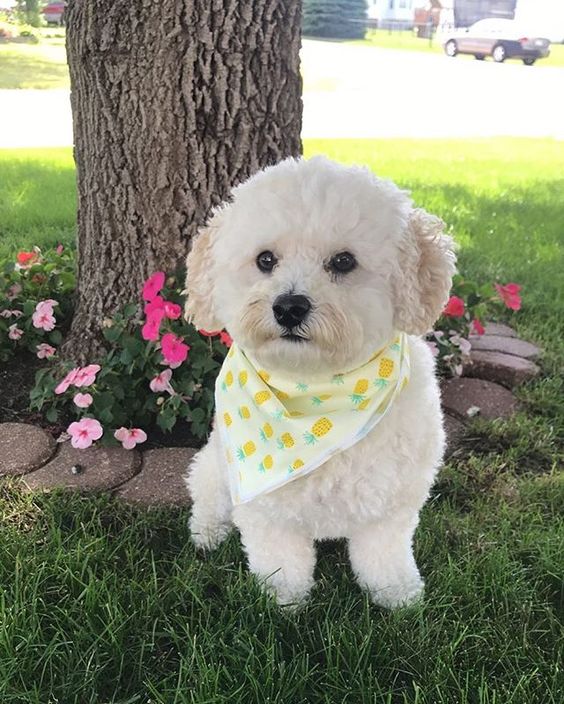
The Bichapoo, a mix between the Bichon Frise and Poodle, may face various health problems inherited from its parents. Owners and breeders need to be aware of these potential health risks and take steps to keep their pets healthy.
Knowing what affects a Bichapoo’s life expectancy can help these pets enjoy a longer and happier life.
They may be prone to hip dysplasia and disk disease, so it’s wise to watch for any signs of these conditions. Regular vet visits for early detection of health issues are crucial to managing your dog’s well-being.
A balanced diet and regular exercise are vital in preventing weight-related health issues.
Keeping up with vaccinations and parasite control is essential to safeguard your Bichapoo’s health.
Lastly, choosing a responsible breeder is crucial as it can lessen the chance of inherited health issues.
Genetic Disease Risks
Bichapoos, a cross between Bichon Frises and Poodles, are prone to specific genetic health issues like hip dysplasia and disk disease.
Hip dysplasia is a health concern where the hip joint doesn’t form properly, causing pain and difficulty in movement.
Disk disease is another risk for these dogs, leading to spinal issues that can result in intense pain and neurological complications.
Weakness in the hind limbs, poor coordination, and trouble with eating may indicate the beginning of these conditions.
Owners should stay alert to these potential problems and understand that catching them early and managing them effectively ensures their Bichapoo lives a comfortable and happy life.
Preventative Health Measures
Bichapoo owners should prioritize their pet’s health by taking preventive steps against common issues like hip dysplasia and disk disease. These can cause mobility problems, marked by stiffness and weakness in the back legs. Paying close attention to these symptoms and scheduling regular vet visits are vital for catching and managing issues early on.
Beyond physical health, mental wellness matters just as much. Proper potty training and addressing separation anxiety are crucial to preventing stress-related behaviors affecting a dog’s well-being. Early and ongoing training and socializing can ward off ‘small dog syndrome’ and ensure a balanced and happy temperament.
Holistic care that includes physical and behavioral health is critical to your Bichapoo’s long and fulfilling life.
Lifespan Expectancy Factors
Knowing the health issues that Bichapoos may face is vital in helping them reach their potential 15-year lifespan. These dogs can inherit health problems, like hip dysplasia, from their Bichon Frise parents, which may cause pain and make it hard for them to move around.
Another concern is disk disease, which may show stiffness, rear leg weakness, uncoordinated movements, and problems with eating. These issues can lead to weight loss and overall health decline.
To keep Bichapoos healthy and possibly extend their life, it’s essential to watch for these issues and maintain regular vet check-ups.
Grooming and Maintenance
Caring for a Bichapoo goes beyond cute looks; it’s about their health and comfort. Regular brushing, bathing, and nail trims keep their coat in good shape and help avoid problems like tangled fur and uncomfortably long nails. It’s also critical to clean their ears regularly to prevent infections, mainly because Bichapoos can be prone to ear problems.
- Brush their coat often to stop knots and tangles from forming.
- Follow a vet-recommended bath schedule to keep their skin and coat in prime condition.
- Clip their nails before they get too long to keep your Bichapoo walking quickly and pain-free.
- Maintain their coat’s shine and health with the proper grooming practices.
- Clean their ears as needed to help prevent any infections and keep their hearing clear.
Brushing Frequency
Brushing your Bichapoo’s coat regularly, at least a few times each week, is essential to keep it free from tangles and matting. The breed’s curly and hypoallergenic fur needs careful attention to avoid knots that can cause discomfort and skin problems.
Regular brushing maintains the dog’s good looks and supports healthy skin by spreading the coat’s natural oils. Daily brushing can be a good practice for those looking to keep their Bichapoo in the best condition. This routine helps limit the build-up of dirt and allergens, contributing to the dog’s health.
A steady grooming schedule is critical to the well-being of these friendly pets.
Bathing Schedule
For Bichapoos, a good bathing schedule is about every three to four weeks to keep their skin healthy and their coat in good condition. Washing them too often can strip away the oils that protect their skin and fur.
It’s vital to choose dog-specific shampoos to avoid any skin irritation and keep their skin pH levels safe. After a bath, dry your Bichapoo thoroughly to prevent skin problems from trapped moisture, especially in their curly fur.
Regular brushing and occasional professional grooming are essential to prevent tangles and mats in a Bichapoo’s coat, which goes hand in hand with a thoughtful bathing routine for their health and appearance. These steps help to keep your Bichapoo looking great and feeling comfortable.
Nail Trimming Essentials
Regular nail trimmings are essential for your Bichapoo’s comfort and health, typically every three to four weeks. Owners should keep their Bichapoo’s paws in top shape by making this a part of their routine care.
The essential items for a successful nail trim include dog nail clippers or a grinder, styptic powder for any nicks, and some treats to reward your dog for staying calm.
Be extra careful to avoid cutting into the quick part of the nail with nerves and blood vessels. Trim just a bit of the nail at a time to be safe.
If you’re not confident in doing it yourself, getting help from a professional groomer is wise to keep your pet happy and healthy.
Coat Health Tips
Caring for a Bichapoo’s coat requires regular grooming to keep it healthy and free of tangles. Their coat may not shed much but can become matted without consistent care. Brushing a few times weekly with the right tools can prevent knots and smooth the skin.
Regular grooming keeps your Bichapoo looking good and spreads its skin’s oils, giving its coat a healthy shine. A well-balanced diet with high-quality dry food will provide the necessary nutrients for strong hair.
Don’t forget about dental hygiene and nail trimming to maintain your dog’s health.
Ear Cleaning Care
Taking care of your Bichapoo’s ears is a vital part of their grooming routine, especially since they’re susceptible to infections due to their floppy ears. Regular ear cleaning is essential to keeping your pet healthy and avoiding potential issues.
Inspecting their ears for any signs of redness, bad smell, or unusual discharge is a good practice. When cleaning, use a recommended ear solution and gently wipe the outer ear areas with a soft cloth or cotton ball, being careful not to probe too deeply into the ear canal to avoid injury.
Keeping up with your Bichapoo’s ear hygiene will help ward off infections and ensure they remain comfortable and happy.
Dietary Requirements
Feeding your Bichapoo properly is critical to their health and happiness. A balanced diet tailored to their unique needs is vital, especially if they have allergies. Stick to a regular feeding routine to keep their metabolism and energy levels steady.
Ensure your food is rich in high-quality proteins, fats, and carbohydrates. Watch their calorie intake closely to prevent weight gain. Offering them allergy-safe options will help prevent any adverse reactions.
Keep their meals on a strict schedule for the best results.
Optimal Nutrition Balance
Bichapoos thrive on a diet that balances protein, carbs, fats, vitamins, and minerals.
To keep them healthy as they grow, it’s critical to manage their meals, especially since they typically weigh between 10 and 15 pounds. Matching their food portions to how much they play and exercise helps prevent weight gain.
Quality proteins are essential for strong muscles, and carbs give them the energy they need. Omega-3 fatty acids keep their coat shiny and skin in good condition.
Allergy-Friendly Foods
Caring for a Bichapoo’s diet requires attention to their health needs and potential allergies in the household. Choosing hypoallergenic ingredients helps reduce the risk of triggering allergic reactions for the dog and its human family members.
An ideal diet for Bichapoos would exclude common allergens like corn, soy, and wheat. Instead, it should include novel proteins and carbs less likely to cause allergic responses.
Seeking advice from a veterinarian or a pet nutrition expert is beneficial to customize a diet that meets your dog’s nutritional needs and keeps your home safe for those with allergies.
Feeding Schedules
Creating a feeding schedule for your Bichapoo is vital to their health. This ensures they get the proper nutrients for their growth and brain development.
As your Bichapoo grows, its diet needs to keep up with its active lifestyle, which should include regular training and exercise.
A Bichapoo’s diet must provide a mix of protein, fats, carbs, and essential nutrients, fostering its smarts and ability to adjust to new situations. Feed them consistently and in the right amounts to help them stay at a healthy weight and full of energy. Their food should also have omega fatty acids to support a shiny coat and healthy skin.
Adjusting their diet to their specific needs is vital to support their well-being over the years.
